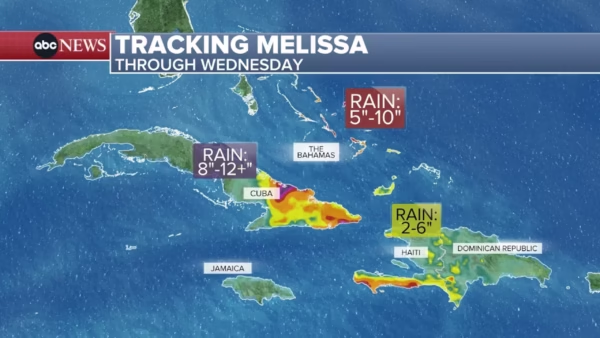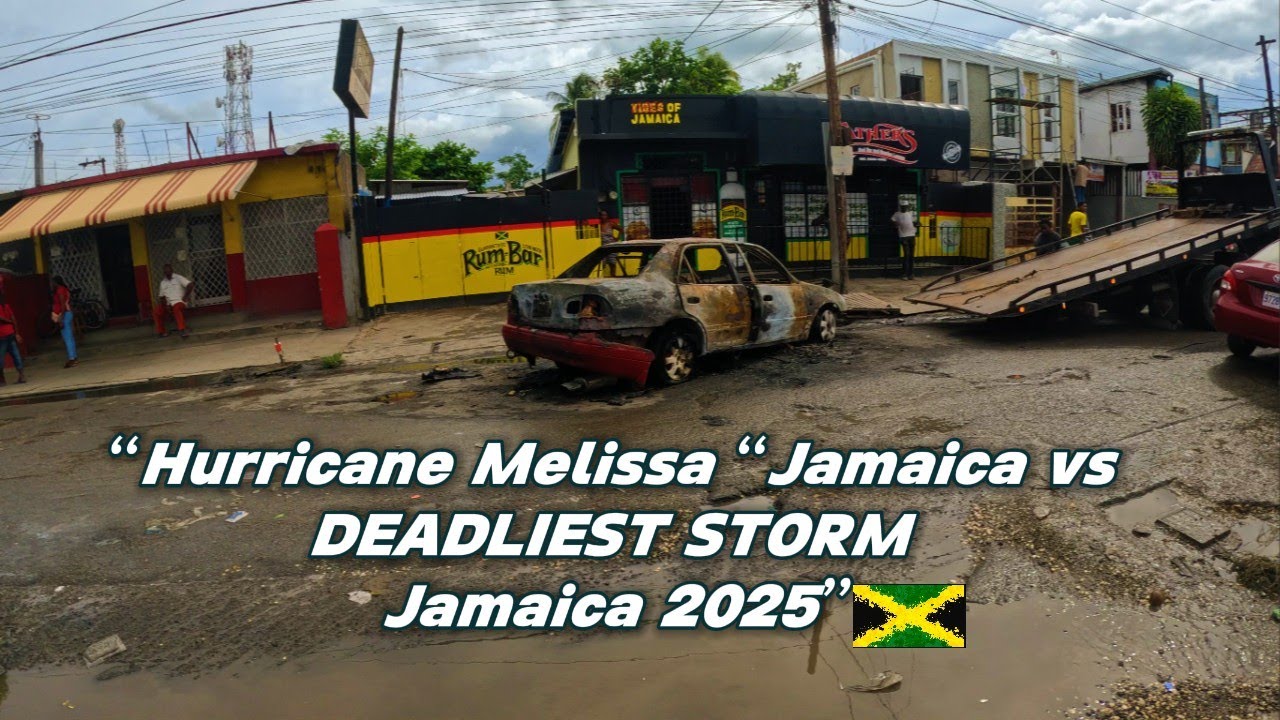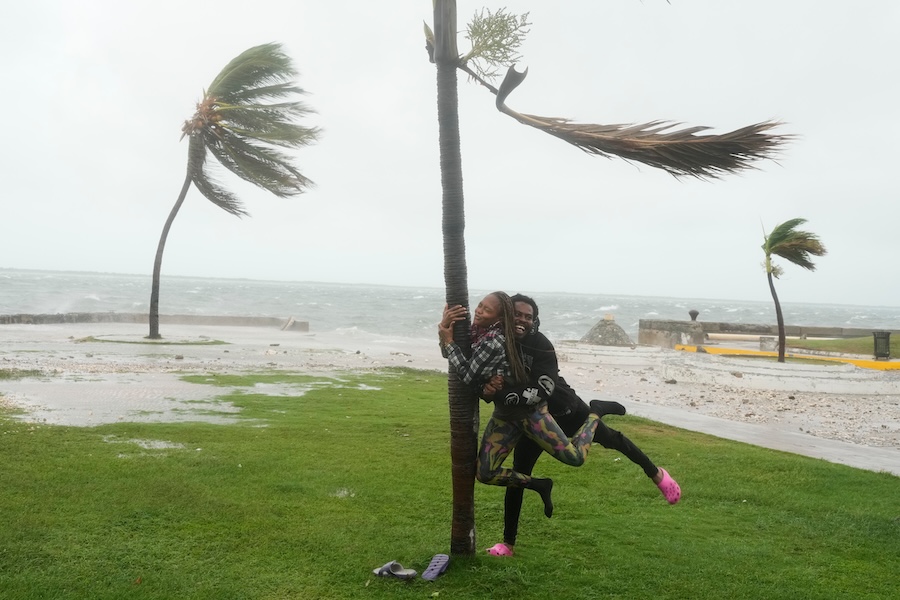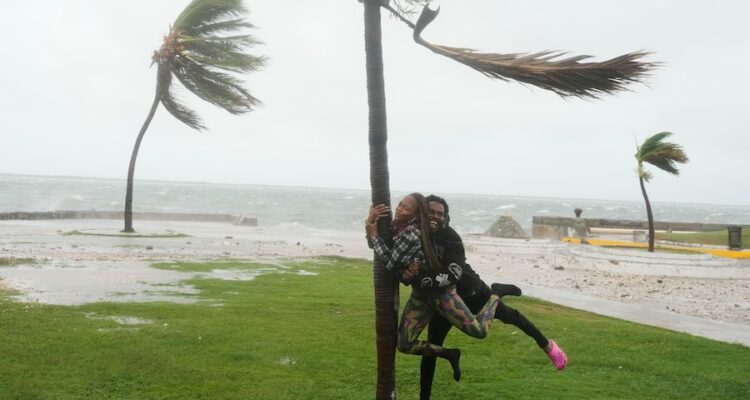A catastrophe of historic proportions arrived on Tuesday afternoon as Hurricane Melissa made landfall in southwestern Jamaica with sustained winds estimated at 185 mph and a central pressure near 892 millibars, tying it for the strongest Atlantic hurricane landfall on record.
The Category 5 storm, described by the National Hurricane Center as “catastrophic,” bore down on Jamaica with little movement, prolonging the assault of fierce winds, torrential rainfall and storm surge across the island.

In the parish of St. Elizabeth and nearby coastal areas such as Black River, entire communities were submerged or left in ruins. Reports indicate downed powerlines and uprooted trees lay across flooded roads, and hospitals suffered structural damage — one lost its roof and power, forcing evacuees mid-storm.
More than a third of Jamaican households—over 240,000 electricity customers—were without power as the storm made landfall. Travel, communication and relief efforts face huge hurdles: many roads are blocked and some remote communities remain cut off.
Evacuation shelters were activated and airports closed ahead of the storm’s arrival, but official warnings were not fully heeded. The government of Jamaica warned that its infrastructure was ill-equipped to withstand such a force.

Prime Minister Andrew Holness declared the entire island a disaster zone and appealed for international support. “There is no infrastructure in the region that can withstand a Category 5,” he said.
Alongside the ferocious winds, heavy rainfall is expected to cause life-threatening flooding and landslides, particularly in mountainous terrain and low-lying coastal zones. Some areas may have received more than 40 inches of rain while storm surges of up to 13 feet were reported in exposed spots.
At this early stage, casualty figures remain unclear. Officials say three deaths and 13 injuries were recorded during preparation for the storm, though final counts from landfall events are still pending. The full scope of the devastation—homes destroyed, farmlands inundated, infrastructure crippled—is still being assessed.

A couple jokes around on the coast in Kingston, Jamaica, as Hurricane Melissa approaches, Tuesday, Oct. 28, 2025. (AP Photo/Matias Delacroix)
Forecasters warn that the slow-moving Melissa may linger over Jamaica’s western side for hours, intensifying damage and delaying relief efforts. The storm remains poised to continue toward Cuba and the Bahamas.
As daylight broke in the hardest-hit zones, the true scale of Jamaica’s loss became evident: roofs ripped away, once-lush green hillsides turned slick with mud and debris, and coastal fishing villages left battered. Residents who sought safety now face grim choices of return or rebuilding — in a nation still recovering from previous storms and now confronted with one of the fiercest on record.

